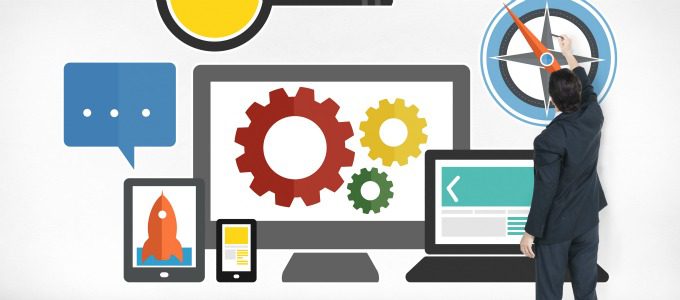In 2015, the development and refinement of apps and tools such as FitBit, Uber and Nest changed the way we exercise, travel and heat our homes. We’re highly focused on optimizing our personal lives for performance and efficiency, and the world of corporate learning is poised to catch up.
Here’s how new technology and knowledge tools will accelerate corporate performance in the coming year:
Manage the information explosion: Today’s employees are dealing with a higher volume of data than ever before, and employers need to make it easy for them to interpret information and use it when needed — without unrealistic expectations that they should be able to carry data in their heads at all times. Rote memorization is ineffective; 20 minutes after memorizing facts, 42 percent of the material has been forgotten.
Organizations are now focusing on creating knowledge frameworks, in which employees easily can look up the specific data they need for each use case. Just-in-time learning and reference tools provide access to details at the moment of need, instead of forcing employees to recall content from a cram session or seminar. This frees their brain space to make analytical and strategic decisions, so they can provide more value to their companies.
Tighten the knowledge supply chain: To support the just-in-time flow of information, knowledge-driven companies increasingly will manage their intellectual assets with the same organization and critical analysis as manufacturers do in traditional supply chains. Business leadership knows that learning doesn’t stop with the learning department, and field reference isn’t a standalone resource. Instead, information can continuously feed a living body of knowledge that crosses traditional boundaries across departments. Rather than building specialized e-learning content that goes stale quickly and is costly to update, learning groups can use new content technologies that reduce duplication across distribution channels and include subject-matter experts in the production workflow to increase accuracy. The result should be a knowledge supply chain that earns the trust of employees who rely on it.
Going (more) mobile: Today, 77 percent of business executives use their smartphones for research, yet the overwhelming majority of learning systems are mobile-hostile. Further, all mobile content isn’t created equal. PDFs and slides may work within a tablet interface, but they are horrible to read on a smartphone. Until now, organizational inertia has allowed most e-learning material, which has traditionally been designed for desktop access, to plug along, and businesses have accepted it as the status quo –– but an increasingly mobile workforce is ready for more and for better. Organizational leadership no can longer ignore mobile as a work tool, and they will put technology in place that allows teams to easily access knowledge optimized for devices employees use most.
Harnessing data for instructional design: Historically, learning systems measured learner success, not content. Most instructional content is geared toward the slowest learners, forcing everyone else to spend too much time on the basics rather than diving into their areas of interest. It’s time to take a personalized approach to learning that is built around the individual learner’s interests and abilities. As we move into 2016, we will see data used to optimize content for the individual learner and the business objectives at hand, rather than broad metrics like course completions. Instructional design will consider what content performs well, what content is unused and what demonstrates the most value at that time, for that user.
Increasing multiresource reporting: Blended learning has been the gold standard for retention, engagement and overall acumen, but that’s tricky with a mixed-platform system where resources don’t use consistent metrics, let alone talk to each other. The SCORM technology standard — Sharable Content Object Reference Model — was developed more than a decade ago, and it’s showing its age. SCORM delivers learning inside traditional learning management systems. In an increasingly mobile workforce, however, that’s not good enough for today’s employees. Instead, many companies are turning to the Experience API, or xAPI, formerly known as the Tin Can API.
Experience API-enabled learning activities generate statements, or records of e-learning, and make it possible to share learning data across diverse platforms through cloud-based technology. That means organizations can consider all factors of blended learning programs and track cross-site activities and off-browser learning, as well as a wide variety of activities such as team-based e-learning and classroom training.
Understanding return on investment: The days of implementing learning and development haphazardly are no more. We’re entering into 2016 with data and reporting that allows for detailed and thorough consideration of the customizable content to drive corporate learning and development. Sales teams are better enabled with the just-in-time knowledge they need to move potential clients toward close, and they’re spending less time in informational meetings and learning sessions.
Field reference materials are easy to search and available at the time-of-need, avoiding costly mistakes and wasted time. All content delivery systems should report their usage, to help content creators and administrators iterate quickly and improve their effectiveness. The successes and failures of corporate content will continue to feed the big data for learning in 2016, helping learning leaders best understand learning investments and how to make the most of them.
For years, optimizing knowledge retention and management has been a cornerstone of company performance, but learning professionals struggled to demonstrate programs’ effect. By adopting new standards and technologies that deliver the right knowledge to workers when and where they need it most, 2016 will be a year in which leaders in these functions can finally show critical value to their organizations in no uncertain terms.















